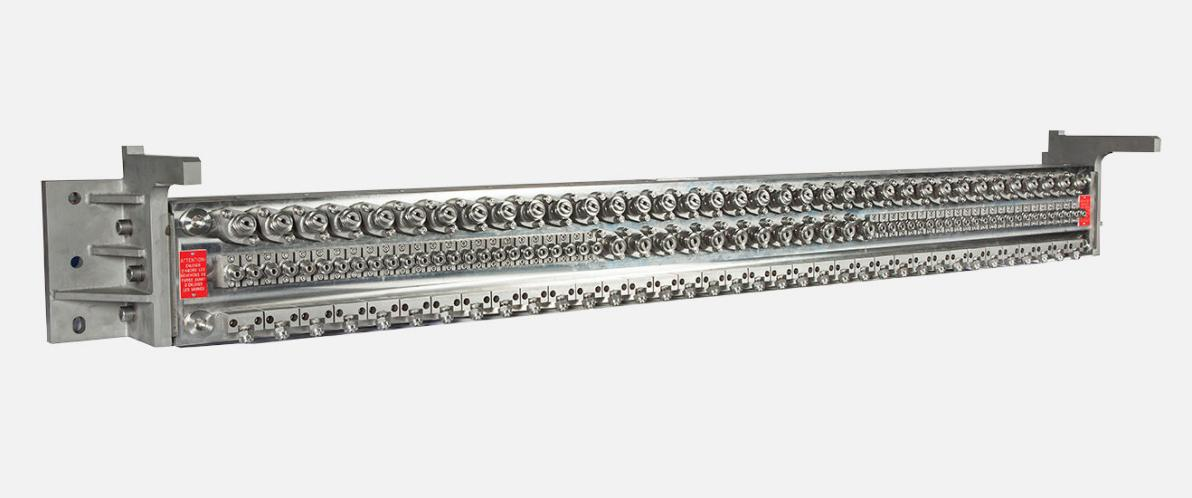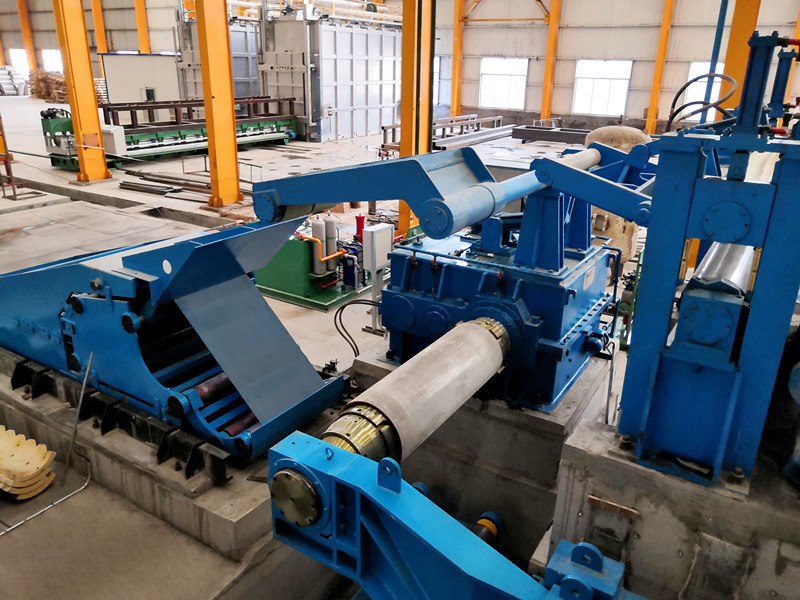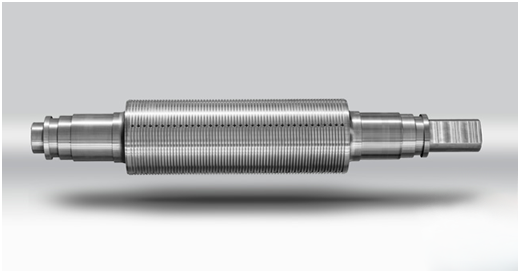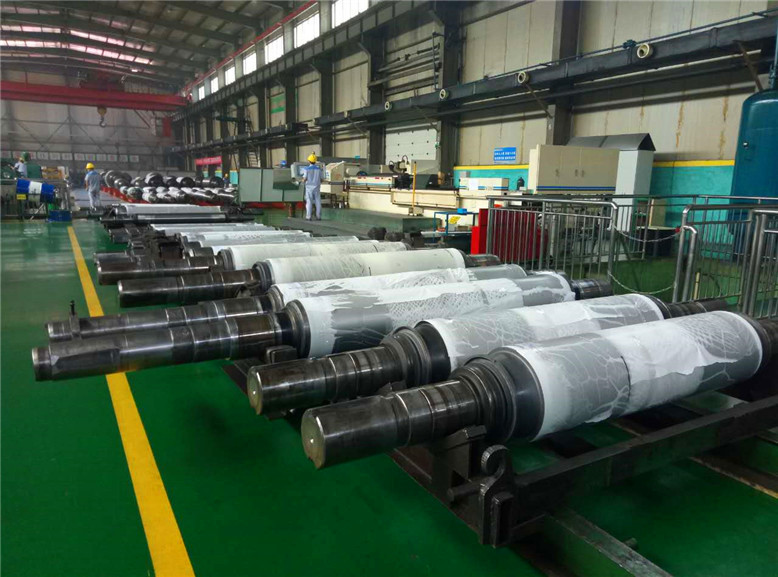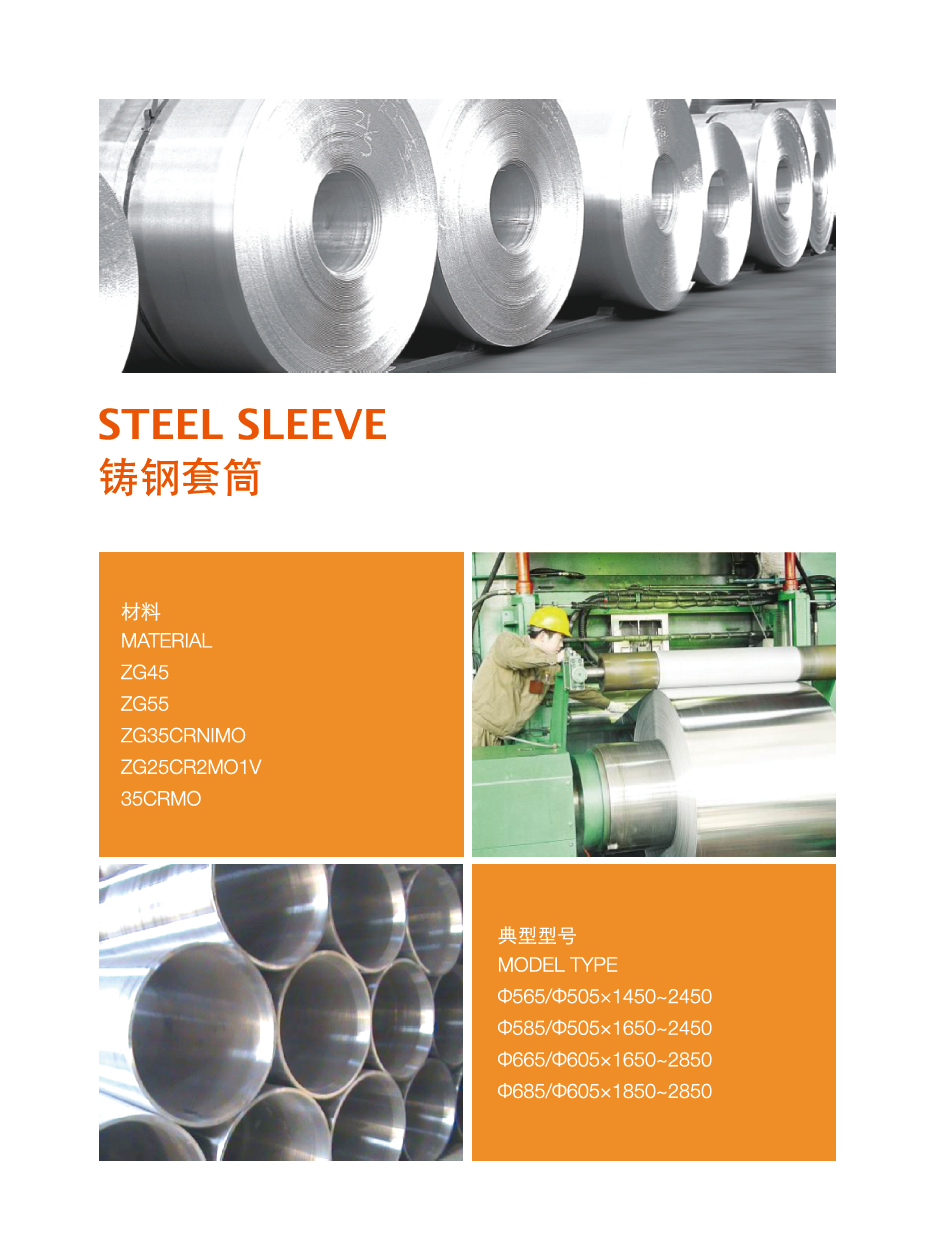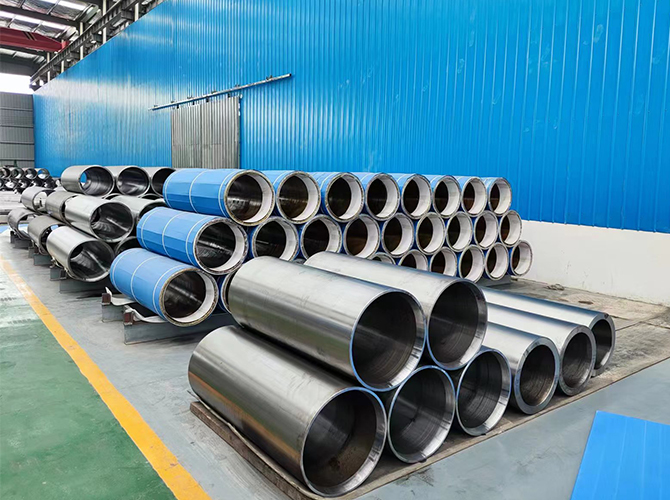

- Roll Cooling Spray Systems
- Hengzhong Catalogue
- Aluminum Casting roller
- Aluminum Casting roller shell
- Aluminum casting mill
- Aluminum foil rolling mill
- Aluminum Cold rolling mill
- Mold Crystallizer aluminum for continuo
- Cut to length line
- Tension leveler line
- Aluminum coil Edge trimming of rewinding
- Roll sleeve for aluminum coil
- Roller shell for cast rolling mill
- Color Aluminum Reflective sheet
- Work roll of cold rolling mill
Source:Hengzhong Heavy author:Admin Date:22-11-16 Glance Over:
Ø Production process route of aluminum foil for battery
The aluminum foil processing process is the aluminum product with the most processing steps, the smallest thickness, and the most difficult aluminum products in the aluminum processing industry. At present, there are two commonly used processing routes in the industry: (1) ingot hot rolling method; (2) continuous casting and rolling method. The process of casting and rolling applied to aluminum foil materials is gradually mature, and more and more enterprises have begun to use the casting and rolling process to produce aluminum foil. The continuous casting and rolling method is becoming the mainstream process route for producing aluminum foil .
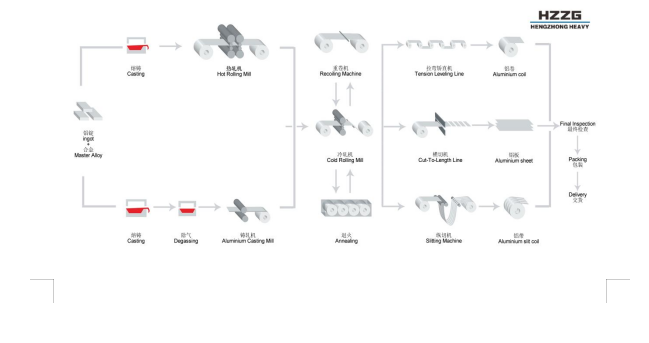
(1) Ingot hot rolling method: First, the aluminum melt is cast into a flat ingot, and after homogenization, hot rolling, cold rolling, intermediate annealing and other processes, it continues to be cold rolled into a sheet with a thickness of about 0.4~1.0 mm as a foil. Material billets (casting → hot rolling → cold rolling → foil rolling).
(2)Continuous cast rolling method: Hot rolling has certain advantages in terms of alloys with large liquid-solidus lines such as high element content and heat treatment that can be strengthened, and especially military products. For general industrial double-zero aluminum foil, ordinary single foil, battery foil, etc., which basically belong to pure aluminum series or general low iron-silicon series of alloy products with narrow liquid-solidus lines, the continuous casting and rolling process shows a larger strengths and vitality. The production process of battery aluminum foil casting and rolling process involves alloy casting, homogenization, casting and rolling, cold rolling, intermediate annealing, foil rolling and other processes. Each step has technical difficulties and requires rich experience accumulation. Deduction, mutual influence and restriction of the yield rate of the next production link.
Smelting : Adjust the composition of the alloy during smelting to improve the performance of the finished product and make the composition uniform. And it is required to carry out degassing, slag removal, filtration process, full and uniform stirring, and the hydrogen content should be controlled below 0.1ml/100gAL.
Cast rolling : online degassing, double-stage filtration. Appropriate casting area and nozzle roll gap are used to ensure good casting surface quality and internal grain structure.
Cold rolling : When the cold rolling mill is in cold rolling production, the surface of the roll is blown clean, and there should be no residual oil stains, and low temperature intermediate annealing is carried out.
slitting and trimming : clean each guide roller in the guide path when longitudinally shearing, and wipe each guide roller with alcohol or acetone to ensure that the surface of the aluminum coil cannot be imprinted, stuck to aluminum, scratched, scratched, and the end surface cannot appear. There are burrs, towers, ruffles, small waves on the sides, etc.
Annealing : When annealing, use high temperature-resistant aluminum foil tape to seal the layer and install it in the furnace for annealing; when the annealed material is completely cooled, it is put on the rolling mill for production.
Foil rolling : When the base material is rolled in foil, ensure a slow rolling speed and a small tension to prevent defects such as marks, sticking, and large thickness fluctuation on the surface of the aluminum plate during rolling; complete the rough rolling of the foil After rolling, it can be rolled after cooling to reduce surface rib, sticking and other defects during subsequent rolling; when the finished product is rolled, replace the work rolls and backup rolls that do not meet the requirements, and wipe each of the guide paths. Roller, adjust the blowing nozzle of the rolling mill when the finished product is delivered, and there is no continuous oil spot on the surface of the aluminum foil.
Finished product slitting : When slitting, each guide roller in the guide path must be cleaned; ensure that the surface of the aluminum coil is free from imprints, aluminum sticking, abrasions, and scratches, and the materials off the rolling mill are immediately transferred to slitting for production.
Inspection and packaging : When inspecting the finished product, the main inspection is that the thickness and width of the aluminum foil should not exceed the tolerance range, the end surface should not have burrs, flanging, bumps, and the staggered layer should not exceed 0.5mm. The end faces are 5mm each. After passing the inspection, they are packaged and put into storage according to the battery foil packaging requirements.
Ø Production technical requirements of aluminum foil for battery
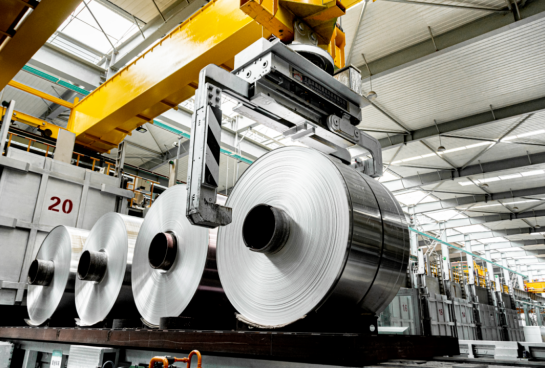
Battery foil has very strict requirements for various technical indicators according to production characteristics. The main key production technologies are as follows:
n Melt quality (control gas, metal and non-metal impurities)
n Shape control (flatness of aluminum foil, controlled by online shape meter, feedback online control through PLC electrical signal)
n Thickness control (The aluminum foil rolling mill mainly relies on the online thickness control system (AGC) to control the thickness. To achieve such control accuracy, the influencing factors include alloy composition, hydraulic system, roll roundness, bearing accuracy, etc.)
n Surface quality (finished product with pinhole and surface defect detection)
n Surface wetting tension (currently improved by auxiliary methods such as baking and corona, and it is also the main research project in the future. )
n Mechanical properties (generally refers to tensile strength and elongation, the current tensile strength of battery foil is between 190-280Mpa.)
n End face quality (generally refers to the cutting quality of the edge of the aluminum foil, there are also strict requirements for the end face string layer)
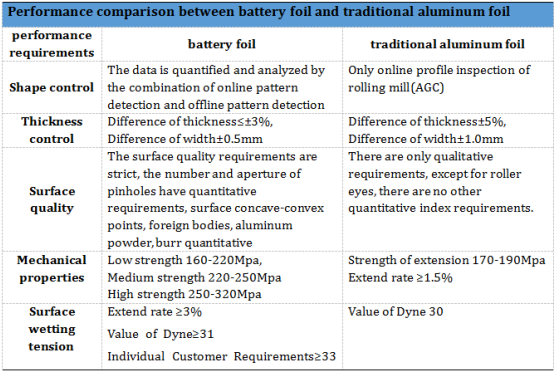
With the increase of the energy density of the power battery, the aluminum foil as the current collector is getting thinner and thinner, so the requirements for the impurity content are getting lower and lower. High requirements such as length, thinness and high strength are the development directions of battery foil production technology.
On the whole, battery aluminum foil is affected by the overall high barriers in the industry, coupled with the outbreak of downstream demand, the overall supply of the industry is tight. The casting rolling mills, cold rolling mills,aluminum foil rolling mills, cut to length line,slitting line and other products of HengZhong Heavy Industry conform to the market trend of battery foils. We provide fully integrated automation and drive solutions to help our customers maximize yield and productivity .
- Aluminum foil lunch box --- a new choice of [23-03-10]
- Technical requirements and production proces[23-03-10]
- Aluminum strip cold rolling production proce[23-02-14]
- Production of Decorative Aluminum Foil by Ca[23-02-14]
- aluminum plates casting mill[17-04-14]
- roller for cement mill process[23-02-17]
- Stretcher Leveler--hot rolled aluminum plate[23-01-12]
- Current Situation and Development Prospect o[22-11-16]
- Battery aluminum foil—an important material [22-11-16]
- Production process and technical requirement[22-11-16]
Address:Yongan Road, Gongyi City, Zhengzhou, Henan, China
Zip code:451200
Mail:hnhzzg@gmail.com
FAX:0086-371-64100299
TEL:0086-371-64100199
If you have any question, please leave messave here. We will reply you as soon as possible.
Copyright 2013 aluminum-casting-mill.com Zhengzhou Hengzhong Heavy Machinery Manufacturing Co., Ltd. All Rights Reserved. Address: Yongan Road, Gongyi City, Zhengzhou, Henan, China
TEL: +008615188318176 E-mail: hnhzzg@gmail.com TEL : +008615188318176 Fax : 0086-371-64100299
Whatsapp : +008615188318176 Wechat : +008615188318176
